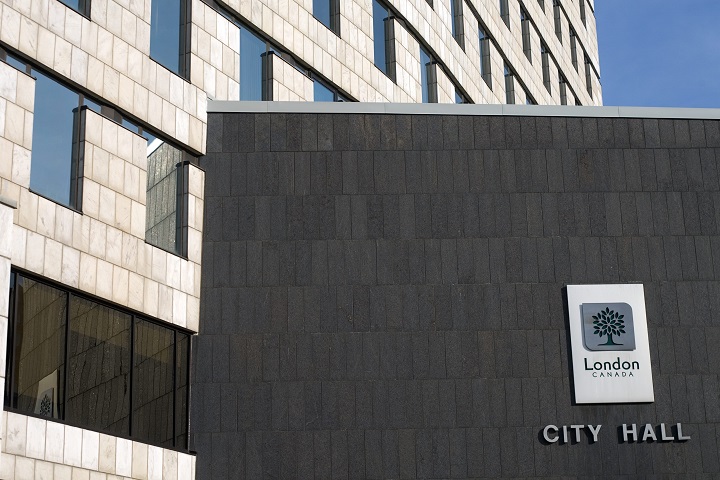Members of a London city committee voted Tuesday to pause indefinitely the city’s plans to widen eight kilometres of Wonderland Road, a major west London corridor, from four to six lanes.

The 5-1 vote by the Civic Works Committee to suspend the project’s environmental assessment study came on the recommendation of city staff. Coun. Paul Van Meerbergen voted against the motion, while Mayor Ed Holder was absent as he is on vacation. The matter will now go before full council.
According to a city staff report, a review of the Wonderland project through a climate lens found that widening the west London artery would have major environmental impacts related to greenhouse gas emissions, and would negatively impact the streetscape, as well as contribute to accessibility and connectivity issues.

The roughly 12-year, $212-million project to widen Wonderland between Sarnia and Southdale roads has been in the works for years and was one of 12 transportation projects staff reviewed using a Climate Emergency Screening Tool (CEST), first unveiled in the wake of council’s climate emergency declaration and the formation of the city’s Climate Emergency Action Plan.
(Staff also recommended, and the committee agreed, that one other project, the widening of Adelaide Street north of Fanshawe Park Road, be suspended as well.)
“Widening to six lanes to address traffic congestion is predicted to experience a return of congestion due to induced demand while creating accessibility pressures,” a report from city staff, put before the committee, reads.
“The corridor will be evaluated as part of the upcoming Mobility Master Plan (MMP) with a focus on transit, high occupancy vehicle use and active transportation.”
Development of the MMP is expected to begin soon. The plan is set to supersede the city’s 2030 Transportation and Cycling master plans.
Ward 10 Coun. Paul Van Meerbergen, whose ward is bisected down the middle by Wonderland Road, was the lone nay during Tuesday’s committee vote.

Get breaking National news
Meerbergen criticized the decision to halt the project, describing the move as being “not in the best interests of the city.” Feedback from constituents, he said, suggested that motorists want Wonderland widened, and that it is badly needed given its frequent congestion issues.
“If you look at the short term, by not going ahead you’re just encouraging more congestion and idling” and pollution, Van Meerbergen said. Longer-term, more electric vehicles are expected to come over the horizon, he said, noting the lengthy timeframe between now and the entire project’s estimated completion in 2037.
“I’m hearing all this talk about lenses… In this case, it looks like it’s the climate change lens. Let’s not forget that we need a logic and common sense lens as well.”
The climate lens process, of which CEST is a component, is to ensure that issues related to the climate emergency declaration are incorporated in a consistent manner when it comes to city decision-making, according to city staff.
The review confirmed to the city that there was a need to move forward with a “complete streets” model when it came to major capital transportation projects, in which other mobility modes are accommodated through the use of travel lanes, protected bike lanes, pedestrian facilities, and more, staff said.
Ward 8 Councillor Steve Lehman, whose ward is bounded to the east by Wonderland, attended the meeting and expressed concern that suspending the EA study could handcuff the city’s hands when it came to widening specific sections to ease traffic issues around notable choke points, such as near major shopping plazas.
“The recommendation to suspend is tied with a further review under the MMP. The recommendations as proposed in the report certainly would not bind the MMP in its recommendation or preclude any future council-directed improvements to the corridor,” said Doug MacRae, the city’s director of transportation and mobility.
In addition, Lehman expressed concern about the hefty $212 million price tag for the widening project. “It’s fairly substantial,” he said.
“I’m open to hearing suggestions from council on other ideas to address the choke points… because at the end of the day, we want to move traffic through London as efficiently as possible, but also most cost effectively as possible.”
Ward 4 Coun. Jesse Helmer also highlighted the project’s cost, saying it was “a very significant amount of money per kilometre.”
“It’s one of the most expensive projects you could possibly imagine, and what we’re seeing in the results from the climate change screening tool is that not only is it expensive, but it’s also going to lead to greater emissions,” Helmer said.
Helmer opined that the only financial and environmental justification for widening a four-lane road into a six-lane road was if you were doing it to allow for the creation of a dedicated transit lane.
“Six lane roads, it’s basically the width of the 401. Why would you want something like that in the middle of your city?” he said, adding that most of the time the roads wouldn’t be congested, and that even more costs will through future maintenance and replacement.

Deputy Mayor and Ward 7 Coun. Josh Morgan, whose ward includes Wonderland Road north of Sarnia Road, stressed to committee members, “I think where we have to be careful is the perception that the solution is a $200 million, 12-year road widening project.”
What needed to be the focus, he said, was how the city could start addressing the problems identified along the corridor, such as through the Integrated Traffic Management System, localized improvements, and intersection improvements.
“If all of those don’t work, are there areas where we may need to still strategically widen to accommodate some increased flow of vehicles and keep the rest of traffic moving? I think all of those things are on the table,” he said.
“At the end of the day, I don’t want to spend a whole ton of money and and not solve problems for our residents, so I’m very open to the conversation about how we find those solutions.”












Comments